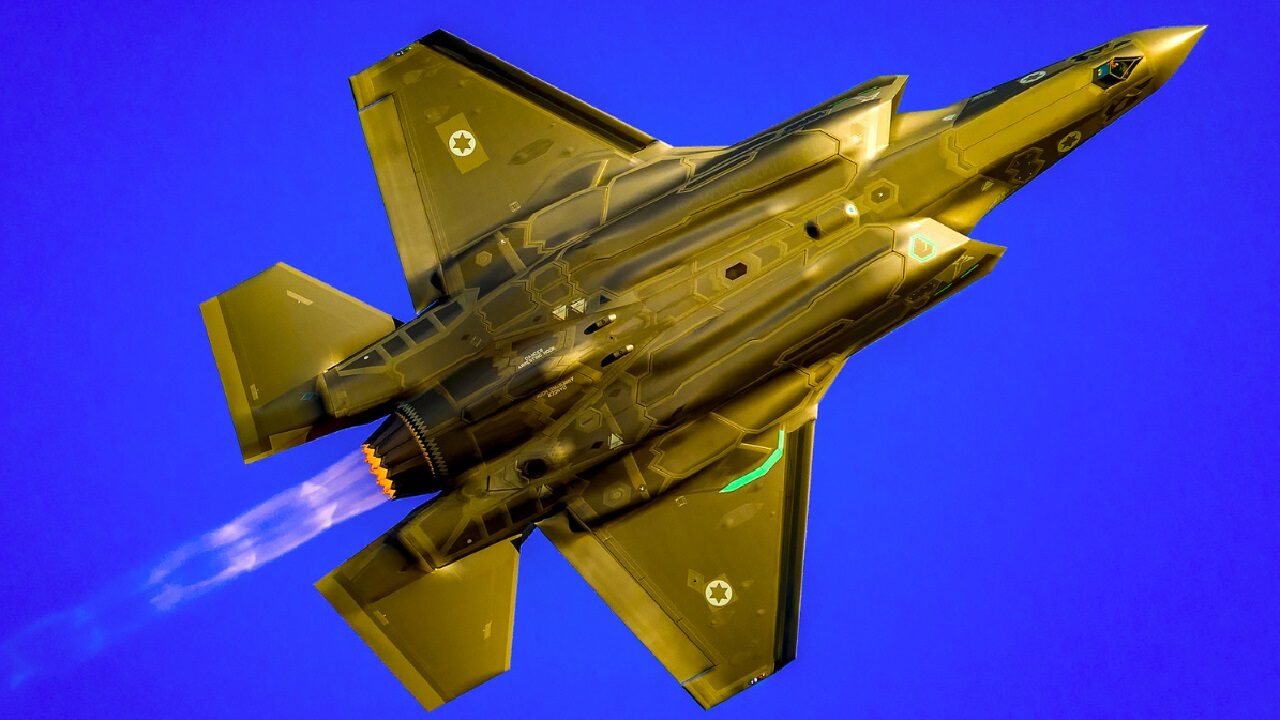More F-35I Adir Fighters for Israel? This week, Israel’s Defense Ministry submitted an official request to the U.S. military’s Joint Program Office to purchase a third squadron of F-35 fighters.
If accepted, the current Israeli Air Force (IAF) fleet of 50 F-35s will increase to 75.
Jerusalem announced earlier this summer that a potential F-35 acquisition was internally approved. The chief executive of Lockheed Martin Israel responded to the latest request in a statement: “We are proud to support the Israeli Defense Forces in providing the F-35 and honored that the Israeli government has announced its intent to purchase additional F-35s.”
The proposed $3 billion dollar deal would elevate the IAF’s already formidable aerial capabilities.
Israel’s Unique F-35I History
Israel’s relationship with the F-35 Lightning II dates back to 2010, when the fifth-generation aircraft’s nine-nation co-development group gave the Jewish state the green light to procure a specialized version of the jet, which became the F-35I.
Lockheed Martin rarely allows client state-requested modifications to be incorporated into the F-35, but Jerusalem wished to layer its own electronic warfare capabilities on top of the platform’s existing avionics.
In addition to these homegrown sensors and countermeasures, the IAF incorporated its own helmet-mounted displays and other data gathering and processing capabilities to their own model — the Adir, or “Mighty One.”
According to the Eurasian Times, the IAF’s drive for operational and developmental independence with its fleet of F-35 fighters stems from the service wanting an added layer of protection in case a cyber attack targets the F-35 platform.
Is the F-35I Adir the Best F-35 Variant?
Surrounded by hostile neighbors and threatened by Iran’s nuclear aspirations, Israel has specific security needs that require ultra-advanced electronics. The Adir’s EWS enables the IAF to jam the electronics and guidance systems of adversarial ground-fired anti-aircraft weapons.
The Iran-aligned proxy groups operating around Israel’s borders make this capability especially significant.
However, considering Iran’s distance from Israel, the F-35’s subpar range is a concern. The IAF could struggle to use the aircraft for aerial and ground attacks on targets more than 1,000 miles away.
Israel has made great use of the platform. In 2018, the Jewish state became the first country to use the stealth fighter in a combat role in the Middle East.
As detailed by Lockheed’s chairman, “With C4I technology integrated into the Adir, the F-35 is particularly critical to countering Hezbollah’s vast rocket threat through rapid identification and prioritization of targets for the IAF. They can fly in what we call ‘beast mode,’ carrying up to 18,000 pounds of internal and external ordnance, in a mix that can include 5,000-pound-class weapons.”
Two Israeli Air Force squadrons fly the F-35I Adir — the 116th Lions of the South Squadron, and the 140th Golden Eagle Squadron at Nevatim Base. Israel’s air force will certainly be pleased to add 25 new F-35Is.
Maya Carlin, a Senior Editor for 19FortyFive, is an analyst with the Center for Security Policy and a former Anna Sobol Levy Fellow at IDC Herzliya in Israel. She has by-lines in many publications, including The National Interest, Jerusalem Post, and Times of Israel. You can follow her on Twitter: @MayaCarlin.

